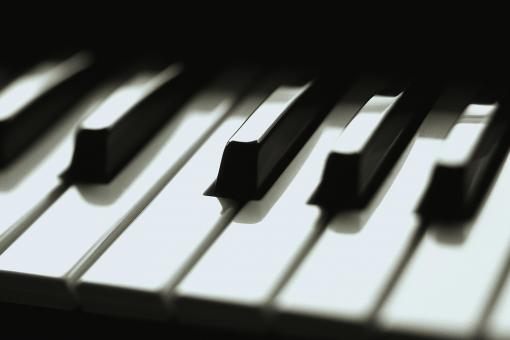Table of Contents
Music has been an integral part of human culture for thousands of years, evolving through various phases and influences. The history and evolution of music genres reflect the social, cultural, and technological changes over time. This article explores the development of major music genres, their historical context, and their impact on contemporary music.

Early Influences and Ancient Music
- Ancient Music: Mesopotamia, Egypt, and Greece are among the ancient civilizations that produced the earliest musical genres. Religious rituals, storytelling, and entertainment all made use of music. Among the instruments were percussion instruments, flutes, and lyres.
- Medieval Music: As musical notation advanced during the Medieval era (500–1400 AD), music became increasingly structured. One type of plainchant that was common in religious contexts was Gregorian chant. Multiple independent melody lines, or polyphony, began to be used.
The Baroque and Renaissance Eras
- Renaissance Music (1400–1600): During this time, harmony and increasingly intricate musical structures emerged. Polyphony and choral music were developed by composers such as Palestrina and Josquin des Prez.
- Baroque Music (1600–1750): The concerto, fugue, and orchestral suite were all created during this time. Prominent composers renowned for their elaborate compositions and use of ornamentation included Antonio Vivaldi, George Frideric Handel, and Johann Sebastian Bach.
The Classical and Romantic Eras
- Classical Music (1750–1820): Form, harmony, and clarity were valued during this time. Joseph Haydn, Ludwig van Beethoven, and Wolfgang Amadeus Mozart were important composers. Structured operas, sonatas, and symphonies emerged during this time.
- Romantic Music (1820–1900): The Romantic era prioritized individualism and emotional expression. Pyotr Ilyich Tchaikovsky, Richard Wagner, and Franz Schubert were among the composers who experimented with new thematic elements in music and extended the use of orchestration.

The Birth of Modern Music Genres
- Early 20th-century jazz: With its roots in New Orleans, jazz blended ragtime, blues, and African rhythms. Charlie Parker, Duke Ellington, and Louis Armstrong are important figures. Swing rhythms, intricate harmonies, and improvisation are characteristics of jazz.
- Blues (Early 20th Century): Inspired by African American communities in the Deep South, blues music has a twelve-bar structure, guitar riffs, and expressive lyrics. Muddy Waters, B.B. King, and Robert Johnson are all significant blues performers.
- Rock and Roll (1950s): Blues, country, and rhythm and blues gave rise to rock and roll. The genre became widely known thanks in large part to performers like Little Richard, Chuck Berry, and Elvis Presley. A new age of youth rebellion and cultural transformation was ushered in by rock and roll.
- Pop Music (1950s–Present): Pop music is distinguished by its universal appeal, straightforward lyrics, and catchy melodies. The genre has been influenced by legendary performers like Britney Spears, Madonna, and Michael Jackson. Pop music frequently mirrors current influences and trends.
- Hip Hop (1970s–Present): Rapping, DJing, breakdancing, and graffiti art are all components of hip hop, which has its roots in the Bronx in New York City. Run-D.M.C., Grandmaster Flash, and DJ Kool Herc were among the pioneers who established the genre. Hip hop has developed into a significant musical and cultural influence.
- Electronic Dance Music(1980s-Present): EDM has included a variety of electronic genres, including house, techno, and dubstep. With their inventive sound production methods, artists such as Kraftwerk, Daft Punk, and Skrillex have impacted the evolution of electronic music.
Contemporary Trends and Fusion Genres
- Alternative and Indie Rock: These genres, which frequently have independent production and experimental sounds, arose in opposition to mainstream music. The popularity of this genre has been aided by bands such as Arcade Fire, Radiohead, and The Strokes.
- World Music: World music combines modern genres with traditional sounds from different cultures. Global musical influences have been introduced to mainstream audiences by performers such as Ravi Shankar and Buena Vista Social Club.
- Blending of Genres: Modern music frequently combines several genres, including synthwave, rap-rock, and country-pop. The varied musical landscape and the impact of digital technology on music production are both reflected in this fusion.
Technology&8217;s Effect on Music
- Recording Technology: From vinyl records to digital streaming, advancements in recording technology have revolutionized the creation, sharing, and consumption of music. Music production has become more accessible with the introduction of digital audio workstations and home recording studios.
- Streaming Services: Websites such as YouTube, Apple Music, and Spotify have transformed the accessibility of music by enabling users to discover a wide range of international artists and genres.
- Social Media: Social media sites are now essential for fan interaction and artist promotion. Social media sites like Instagram, TikTok, and Twitter give musicians new ways to interact with fans and share their music.

Conclusion
The development of musical genres over time demonstrates how dynamic music is and how it can change to reflect societal, technological, and cultural shifts. Music has always reflected and shaped human experiences, from ancient customs to modern inventions. Gaining knowledge about the evolution of various genres helps one to appreciate the rich tapestry of musical history and its continuous development.